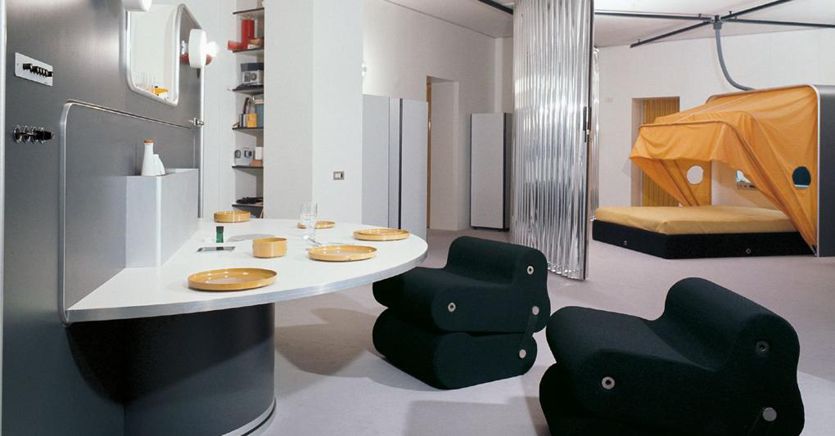Dante Bini
A field of Magliana artichokes is thus transformed by Pier Luigi Nervi into an open-air laboratory, to experiment in full-scale patents for prefabricated concrete houses; another agricultural lot, in the countryside of Castelfranco Emilia, becomes for the young Dante Bini (later known as the architect of Michelangelo Antonioni’s villa in Sardinia) the base of the Mushroom Field, an artificial mushroom farm for light domes, obtained by spraying concrete on a armor of metal springs. «Mini houses with the shape of air», the author defined them, patenting them with the name of Binishells which immediately went around the world, attracting the attention of Americans and Japanese.
In a country like Italy, obsessed with the dream of architecture as a small monument rooted in the ground, this was the start of a silent revolution that gathered around it a small crowd of architects, engineers, builders, even geniuses. handyman, all committed to giving substance to a vision of the house as a mobile and transformable mechanism, from the shell to the interiors and to the furnishings.
Joe Colombo
In particular, Joe Colombo (1930-1971) committed himself to this, a brilliant prefigurer of a revolution in living that was not evaluated at the time in the right measure that we reserve for him today, especially after the hard experience of smart working and domestic confinement. Colombo had very clear ideas about the future, so much so that he could already write in the 1960s: «people will be able to study at home and they will also carry out their business there. Distances will no longer have great importance, the need for megalopolises will no longer be justified ”.
In the rising golden season of Milan rampant on the world stage, the young Joe (of which a new monograph celebrates fifty years from his death) takes on the role of the pragmatic visionary, one eye on industry and another on its transformation in a real cultural system, capable of guiding the customs of today in the prediction of the behavior of tomorrow.
«Red beard, bright eyes, pipe in his mouth, a bit stocky in appearance» as Ignazia Favata, his historical assistant and curator of the archive remembers him «Colombo lived in a frenzy». Like Mollino, he was passionate about skiing and cars; unlike him, however, he was interested in technology and mechanics because he considered them tools for change. Under the banner of “anti-design” he went to the attack of “furniture symbolism” and moves in search of a future not conditioned by formal fantasies or easy approaches to science fiction. To the concept of “style” he opposed the perspective of habitable systems and structures that envisaged the disappearance of furniture in favor of new types of habitats: transformable spaces, for groups that will replace the traditional family and that will share equipment such as to allow interchangeability of the most diverse functions. Like the monobloc kitchen on wheels, which condensed all the appliances and dishes for 4 people into a single block; like the wardrobe container for men and women (a trunk on wheels with removable elements to create reserved areas); like the personal container to read and work (the world in a box!) and the sensational bed Cabriolet which, together with the Rotoliving, he brought the car into the world of furniture, throwing away all the stereotypes of the culture of living and unexpectedly realizing the famous aphorism of Le Corbusier about the house as a “machine for living”.
